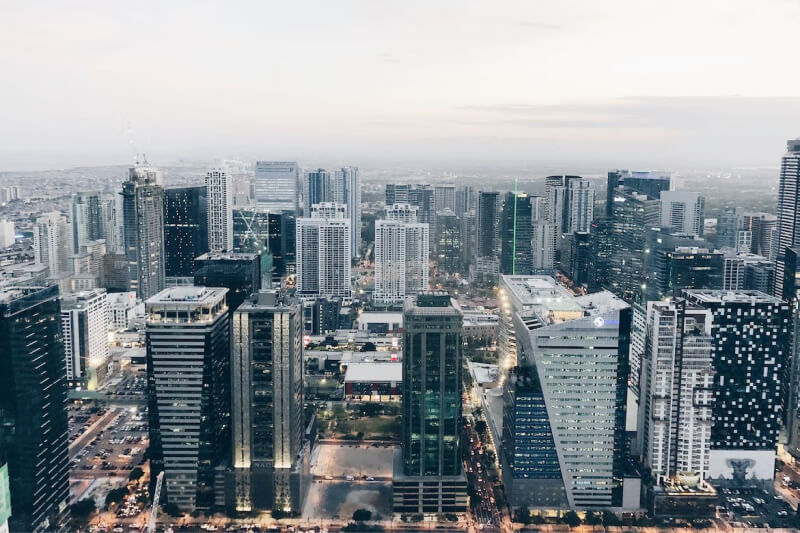
Leading the Charge: How the Philippines Sets the Pace in ASEAN
According to Maybank, a Malaysian universal bank, the Philippines is poised to stand out as the fastest-growing nation in the Association of Southeast Asian Nations (ASEAN).
The Philippine economy demonstrated resilience in 2022, achieving accelerated growth at 7.6 percent after a pandemic-induced recession marked by a 5.7 percent expansion in 2021.
This remarkable rebound contrasts sharply with the country’s 9.5 percent contraction the year earlier due to strict COVID-19 quarantine measures.
Based on the reports and data from the Department of Finance, the current gross domestic product (GDP) of the Philippine economy as of the third quarter of 2023 is 5.9 percent, surpassing the median forecast of 4.9 percent predicted by private analysts. It is said to be the strongest among the major economies in Asian countries.
The Philippines did really well economically in 2022. However, it is expected to slowdown a bit in 2023 before a projected pick up in 2024.
Importance of Economic Growth for the Country’s Development
Economic growth serves as the cornerstone of a nation’s development. In exploring the significance of economic growth for the Philippines, let’s delve into how a flourishing economy stimulates the development of society, infrastructure, and the overall economic landscape, fostering a brighter and more sustainable future.
Prosperity Advancement
Based on a survey conducted by OCTA Research, around 50% of the Filipino families consider themselves as “poor.” Because of the rising inflation and cost of living, many Filipinos have been struggling lately, affecting public spending.
Economic growth in the Philippines serves as a vital force in reducing poverty by actively shaping the labor market landscape, in the light of weaker external demand, by creating employment opportunities, increasing incomes, and providing the financial resources needed for essential social services and infrastructure development.
While this transformation is neither swift nor effortless, a growing economy promises big opportunities and progress for the country in the long run.
Improved Health and Education
A growing economy enhances government spending capacity by increasing tax revenues, raise interest rates, expanding the tax base, and providing the financial flexibility to invest in various sectors.
This dynamic relationship underscores the importance of a healthy and growing economy in supporting government initiatives, comprehensive strategy, and public services. A boost in the government budget enables strategic investments across various sectors, with a primary focus on education and health.
In education, the goal here is to improve the access to quality education. Investing in education infrastructure and programs is one way to make this happen.
It enables individuals to acquire the necessary skills and knowledge to secure better-paying jobs, breaking the cycle of intergenerational poverty.
When it comes to health, governments can invest more in healthcare services and facilities. Better healthcare contributes to a healthier workforce, reducing absenteeism and increasing overall productivity, which is essential to achieving sustained economic development.
Business and Infrastructure Development
As the economy grows, the overall size of the market expands as well, mitigating risks and creating opportunities for businesses to thrive. But this is not the only cause of development; several factors contribute to business and infrastructure developments. Here are the following:
- Employment Opportunities: Increased job opportunities lead to higher consumer spending, which, in turn, benefits businesses.
- Technological Advancement: Economic growth is often accompanied by advancements in technology. Businesses are motivated to invest in technology to improve efficiency, reduce costs, and stay competitive. This technological progress contributes to business development and enhances overall economic productivity.
- Extra Revenue: Economic growth provides governments with additional revenue through increased taxes. This revenue can be allocated to infrastructure projects such as roads, bridges, airports, and utilities. Improved infrastructure not only facilitates business operations but also attracts further investment.
- Infrastructure: Improved infrastructure, such as roads, bridges, and utilities, enhances connectivity and accessibility, opening up new economic opportunities in previously underserved areas.
Driving Factors of the Philippine Economy

The economic landscape of the Philippines is a dynamic interplay of various factors that collectively steer its growth and development. Learning the driving forces will help us understand our nation’s economic journey.
Business
The prominence of business as a driving force of the Philippine economy is grounded in its multifaceted contributions, spanning job creation, technological advancements, and the overall development of the country’s economic landscape.
To start, businesses generate a significant number of jobs. This not only reduces unemployment rates but also provides security in terms of income opportunities for a large segment of the population. In the long run, this would lead to poverty reduction and recovery as mentioned earlier.
Recently, a rising industry has been a great help to the country’s progress; it is the BPO industry. The BPO industry has been growing these past few years, and now it is considered to be one of the main driving forces of the Philippine economy. Why?
Aside from employment opportunities, another reason is that it attracts foreign clients and investments.
Because of this, it is contributing to the country’s foreign exchange earnings. This influx of foreign currency helps stabilize the Philippine economy and supports various economic activities.
Real estate
Real estate stands as a cornerstone of the Philippine economy, shaping communities and fostering development. The growth of the real estate sector is influenced by different factors that shape the market’s dynamics and contribute to its overall expansion.
This continuous growth of the Philippine economy led to increased urbanization, which turned major cities into bustling economic hubs.
This urban shift caused an increased demand for real estate. This growing demand caught the attention of global investors, which urged them to invest, specifically in condominiums and office spaces.
Tourism
For the past years, one of the government’s main focus is to boost tourism in the Philippines. As one of the primary driving forces, tourism’s significance goes beyond leisure and exploration.
As of September 2023, the influx of tourists has exceeded expectations, surpassing 4 million arrivals, which is twice the figure recorded in 2022.
This robust flow of visitors is on track to surpass the Department of Tourism’s (DOT) 2023 target of 4.8 million arrivals. According to Christina Frasco, our Tourism Secretary, within 9 months, these tourist arrivals brought ₱316 billion to the economy.
The government plans to continuously improve our country to be recognized as one of the “tourism powerhouse of Asia.” Central to this vision are strategic infrastructure projects aimed at fostering the growth of tourism.
These developments benefit not only tourists but also local residents, enhancing overall infrastructure in the region.
Future Outlook
Maybank envisions a bright future for the Philippines’ economy, highlighting its inherent strengths and growth potential. Despite anticipated challenges in the medium to long term, the Philippines is expected to have the fastest-growing economy among the Southeast Asian nations in the coming years.
This promising outlook is rooted in the country’s resilient domestic demand, robust fiscal consolidation efforts, and an anticipated resurgence even amid potential weaknesses in external demand.
Camella: The Country’s Largest Home Builder
Camella is widely recognized as the leading home developer in the Philippines. With a history more than 4 decades, Camella’s legacy is built on a foundation of experience and expertise in real estate development.
This extensive history has allowed the company to adapt to evolving market dynamics and emerging trends.
As the key player in the country’s real estate realm, its commitment to providing quality housing goes hand in hand with its broader contributions to community building and national development.
Over the years, Camella has received numerous awards and accolades, further solidifying its legacy as a trailblazer in the real estate sector. These recognitions underscore the company’s commitment to excellence and quality.
Camella’s legacy reflects a sustained impact on the lives of Filipinos, shaping not only the physical landscape but also the aspirations and dreams of those who call Camella communities home.

Celebrate Life’s Milestones in Camella!
Make unforgettable memories in a Camella home.
Our communities are designed to elevate your living experience.


